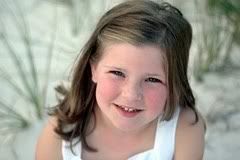Please pay attention to the below statistics that are in RED text. I am sorry that you feel the way you do about the decision that my husband and I have made to put our children in this program. We know that we cannot protect our children from everything. But what we cannot protect them from we must prepare them for....that my friend is drowning. I welcome you or anyone else who comes to this blog to ask questions, contact me with concerns or if you would like to just simply comment on things I welcome you to do that too.
Currently I am in my 5th and final week of training to become an instructor and I could not be more happy to help safe guard children from this NASTY, NASTY killer.
Comment left by Anonymous in Wichita, KS:
"On a happy note? Watch this?" Are you insane? Watching that video, hearing sweet Lincoln making that pathetic little fussing noise, and being repeatedly thrown into the pool, makes me sick to my stomach. I have a better idea. Watch your children diligently and keep them away from pools (it can be done) until they are able to swim confidently and because THEY WANT TO.
Sad, sad, sad.
And I already know what your response will be, it saves lives, blah, blah, blah. Don't bother. That is the saddest thing, I've ever seen, and I only watched a few seconds of it.
Signing off and never coming back.
Comment was made on this video:
• Drowning is the leading cause of death for infants and young children in 18 states and, nationally, ranks 2nd only to automobile accidents, claiming lives of approximately 4,000 children each year and leaving another 12,000 with some form of permanent brain damage.
• Drowning is the second-leading cause of injury-related death among children under the age of 15. (U.S. Centers for Disease Control and Prevention)
• Consumer Product Safety Commission reports 360 children die each year from drowning, and because;
1. Drowning is not a physician reportable phenomenon and
2. If the child does not die within the first 24 hours of the submersion incident, it does not get listed as a death by drowning.
They artificially deflate numbers giving parents a false sense of security. Insurance companies report 1,000 deaths and the medical literature up to 4,000 children die each year from drowning.
• A swimming pool is 14 times more likely than a motor vehicle to be involved in the death of a child age 4 and under. (Orange County California Fire Authority)
• Children under five and adolescents between the ages of 15-24 have the highest drowning rates. (U.S. Centers for Disease Control and Prevention)
• An estimated 5,000 children ages 14 and under are hospitalized due to unintentional drowning-related incidents each year; 15 percent die in the hospital and as many as 20 percent suffer severe, permanent neurological disability. (National Safety Council and Foundation for Aquatic Injury Prevention)
• Of all preschoolers who drown, 70 percent are in the care of one or both parents at the time of the drowning and 75 percent are missing from sight for five minutes or less. (Orange County, CA, Fire Authority)
• The majority of children who survive (92 percent) are discovered within two minutes following submersion (Branche 1999), fatal drowning remains the second leading cause of unintentional injury-related death for children ages 1 to 14 years (CDC 2005).
• Minorities: Between 2000 and 2004, the fatal unintentional drowning rate for African Americans overall was 1.3 times that of whites. However, in certain age groups it was even higher. For example, the fatal unintentional drowning rate for 5-14 year old African Americans was 3.2 times higher than that for whites.
• Between 2000 and 2004, the fatal unintentional drowning rate overall for American Indians and Alaskan Natives was 1.8 times that of whites. In American Indian and Alaskan Native children 5-14 years old, it was 2.6 times higher than that of whites.
• Children aged 1-4 are most likely to drown in hot tubs, spas and swimming pools.
• Children aged 5-14 most often drown in swimming pools and open water such as rivers, lakes, dams and canals.
• In 10 states - Alaska, Arizona, California, Florida, Hawaii, Montana, Nevada, Oregon, Utah and Washington - drowning surpasses all other causes of death to children age 14 and under. Children who die (86 percent) are found after 10 minutes. Nearly all who require cardiopulmonary resuscitation (CPR) die or are left with severe brain injury. (CDC)
• In 2000, there were 3,482 unintentional drownings in the United States, an average of nine people per day. (U.S. Centers for Disease Control and Prevention)
• It is estimated that for each drowning death, there are 1 to 4 nonfatal submersions serious enough to result in hospitalization. Children who still require cardiopulmonary resuscitation (CPR) at the time they arrive at the emergency department have a poor prognosis, with at least half of survivors suffering significant neuralgic impairment. (American Academy of Pediatrics)
• 19 percent of drowning deaths involving children occur in public pools with certified lifeguards present.
• Children: In 2004, of all children 1-4 years old who died, 26% died from drowning (CDC 2006). Although drowning rates have slowly declined (Branche 1999), fatal drowning remains the second-leading cause of unintentional injury-related death for children ages 1 to 14 years (CDC 2005).
Infant Swimming Resource
www. Infantswim.com
NATIONAL DROWNING STATISTICS: 58 percent of parents do not consider drowning a threat to their children. (Safe Kids Coalition)



 Feagans Five
Feagans Five

















